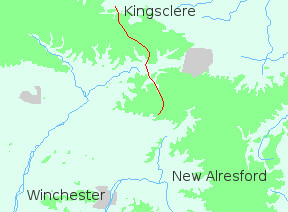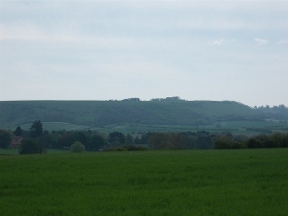
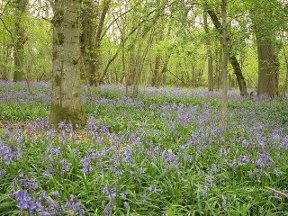
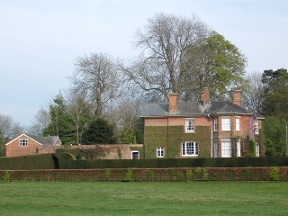
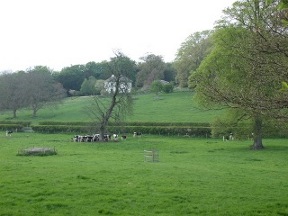
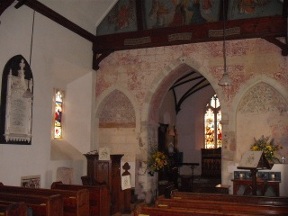
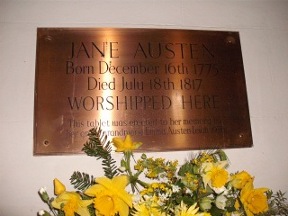
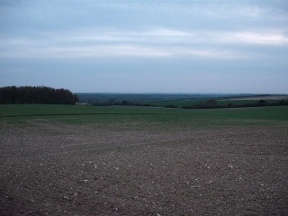
I set off from Kingsclere on a warm, sultry afternoon in May. Rain was forecast for the following day, but I hoped to have reached New Alresford by then. There were twenty miles to go.
For a while the path ran south through level fields. Then it encountered a wall of chalk, climbing sharply to reach the summit. On the far side it sloped gently down to Hannington, an attractive village clustered around a green. There it joined a lane leading to the junction with the Wayfarer's Walk.
The countryside hereabouts is typical of much of Hampshire; quiet and understated. Fields and hedgerows are separated by narrow belts of trees. The land swells in a series of gentle inclines, so that for the most part the view is curtailed. I followed the Wayfarer through woodland shade, where bluebells nodded, and out over stony uplands. It was hot in the hazy sunshine and the going hard underfoot.
The Wayfarer edges round the headwaters of the Test in a series of zig-zags. There are no natural routes along high ground so it makes use of whatever footpaths it can find. After wandering south-east for a while it turns abruptly to reach Deane. There it resumes its original course.
At Deane I took the road south. I was making for Steventon, the village where Jane Austen was born. My way lay through woods and meadows more fertile than any I had yet seen. Rich pastures rose on either side enhancing the silence and seclusion. As I walked, the heat of the day faded and the air grew fresh. After a couple of miles the way was barred by a great wall of earth - the railway line from Winchester to Basingstoke. Passing through a narrow tunnel I entered Steventon.
It lies in a dry valley sheltered by low wooded hills. It's hardly even a village; just a few cottages straggling along a lane. And yet people come there from thousands of miles away, because of a handful of novels written nearly two hundred years ago.
Jane Austen grew up in the rectory, a rambling, old-fashioned building by the turning leading to the church. Her childhood was happy if uneventful, spent in the society of friends and neighbours and her large family.
Nothing now remains of the house but the faint outline of a terraced walk which lay behind it, and the well. It's strange and rather poignant to think that where placid cows now browse in the sunshine one of England's most famous writers walked. The church too is quite moving; a simple structure standing among trees which was empty when I visited. There's a memorial to Jane Austen's brother who succeeded his father as rector, and an inscription on the wall stating that she once worshipped there. And that's it.
From the church I walked a mile over the warm upland to North Waltham. There I rejoined the lane, following it as far as the main road. It emerges by the Wheatsheaf, a posting house where letters for Steventon were left for collection. Austen herself used to come here to pick up the family mail!
I wondered what she would have made of the roar of traffic on the M3. There's no getting away from it. It pursued me for more than a mile as I ducked under the motorway and continued south; until I picked up the Wayfarer once more and headed off over the downs. As I climbed the land became more open.Far away to my right, faint on the horizon, I could sense the dark edge of the New Forest.
It was getting on for bed-time now and the clump of trees on Beckett's Down looked from the map to be an ideal place to stop - as it did on the ground. That I had to keep going was due to a farmer in a pickup who drove slowly past. He was probably just doing the rounds before nightfall, but his presence meant that I couldn't very well set up camp. So I pushed on through the twilight, descending a long slope to the road. Turning right I felt my way into the black depths of Candover Copse.
And there, on the edge of the wood, I found the perfect spot to spend the night. In a slight depression sheltered from the wind was a bed of soft moss. Quickly I unrolled my sleeping bag and crawled inside. Before setting off I had stuffed my pack with fruit and cheese rolls, and a decent Rioja. For a while I lay there munching contentedly. Then, lulled by food and wine and the scent of bluebells drifted on the night breeze, I fell asleep.

